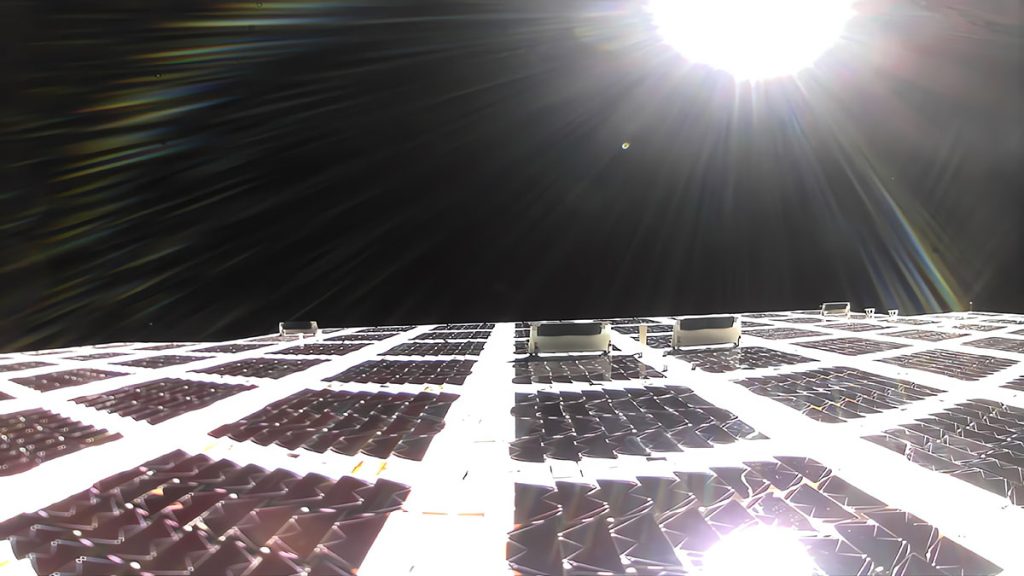
Can we study stars if they are drowned out by bright objects closer to Earth? That’s the question optical astronomers are currently investigating — and a new study is looking at the impact of a massive satellite called BlueWalker-3 on astronomy.
The satellite is more than 530 kilometers away from Earth, which causes problems in studying the night sky. Light pollution is expected to worsen at night, as companies plan to send thousands of additional satellites into space, without regulations on their brightness.
In 2022, the American Texas-based company AST SpaceMobile launched the BlueWalker 3 satellite into space to provide mobile phone services to all continents. But the ambitious project shined so bright that it was among the 10 brightest objects in the sky, according to a study published this week.
“The satellite was among the 10 brightest objects, if you include the stars and the Sun. It’s unbelievable» He told the Washington Post Study by co-author Siegfried Egel. “I think it’s a byproduct of the fact that this type of environmental assessment is not generally done».
The new study quantifies the satellite’s brightness over a period of 130 days. Amateur and professional astronomers recorded its glow crossings from Chile, the United States, Mexico, New Zealand, the Netherlands and Morocco.
The researchers evaluated brightness on a magnitude scale, with smaller numbers indicating brighter objects. For example, the North Star has a brightness of +2. The team found that BlueWalker 3 registered a brightness of +0.4.
The problem with the BlueWalker 3 satellite is its size. The antenna arrangement has an aperture of 64 square metres. – The size of a squash court – it is the largest commercial antenna system deployed in low Earth orbit.
A large antenna helps broadcast mobile phone signals back and forth around the world, and the larger the antenna, the better the call quality. But the antenna also reflects a lot of light back to Earth, making the satellite appear very bright in the sky.
Once it opens its antennas, the satellite becomes 100 times brighter or more. The extra light has many implications for astronomers and non-scientists alike. Eagle explains that light interferes with the data collection process. For example, arrays of satellites could cover near-Earth objects such as an asteroid.
A previous study by Eagle suggested that 50% of near-Earth objects could be affected by these huge arrays of satellites. It may also affect radio astronomy. Light pollution also affects circadian rhythms (natural oscillations that repeat every 24 hours) in humans, as well as animal migration patterns.
Astronomers are already facing some of these problems with satellite constellations, including SpaceX’s Starlink communications satellites. Thousands of Starlink satellites travel across the night sky in train formation, sometimes appearing as ghostly UFOs. Each individual Starlink is already 10 times brighter than the astronomy community would like. SpaceX plans to launch 40,000 satellites.
But the BlueWalker satellite could quickly make conditions much worse. The fully extended satellite is six times larger and brighter than Starlink. With the recent launch of the prototype, AST SpaceMobile plans to send hundreds of new satellites into space – some of which will likely be larger.
Even without the extra brightness, the satellite’s wave could pose a problem for other launch objects. Collisions can create a swarm of debris that may impact or even damage other satellites in its path.
One solution is to bring companies together under a regulatory umbrella, where operators can share with each other their specifications, satellite brightness, the thin coatings they use, and other methods for dimming their satellites.
Astronomer Fabio Falci, who was not involved in the research, calls for strict regulation, but aims to ban satellites rather than limit them. He says astronomers are too flexible in allowing companies to launch constellations of bright satellites, and he urges more astronomers to take a stand, in a commentary he published last March.
follow him Protagon on Google News

“Total alcohol fanatic. Coffee junkie. Amateur twitter evangelist. Wannabe zombie enthusiast.”





More Stories
Is this what the PS5 Pro will look like? (Image)
Finally, Windows 11 24H2 update significantly boosts AMD Ryzen – Windows 11 performance
Heart Surgeon Reveals The 4 Things He ‘Totally Avoids’ In His Life